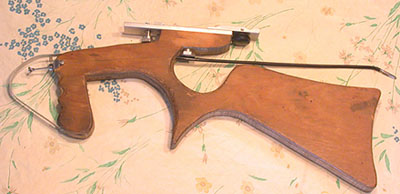
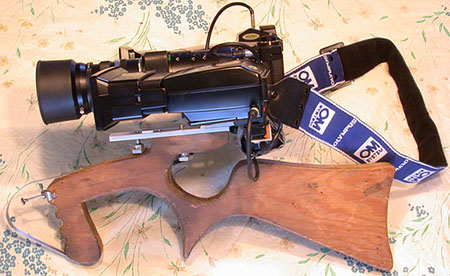
|
A Gun-Mount for Nature Photomacrography by Ted
Clarke, USA |
I made a gun-mount for live butterfly photomacrography in the early 1980s. It was made from a sketch provided by a nature photography club and is shown in Figure 1. The “trigger” is a cable release that extends through a long hole in the wood handle to the camera. The aluminum bracket has multiple thumbscrews for mounting telephoto lenses as well as the Olympus Telescopic Auto Tube used with the Olympus 135 mm f/4 macro lens and OM-4 camera shown in Figure 2. An additional Olympus 25 mm Auto Extension Tube is used along with the telescoping tube to provide a camera magnification range of 0.25-0.63X, which was ideal for the butterfly subjects of various size. This photomacrography was usually done using a powerful dual flash system is better illustrated in Figure 3. The two Olympus T-32 flashes have beam intensifiers set to the coverage of a 135 mm lens. This system was used for the cover of the journal issue containing my article on optimizing diffraction limited depth of field in photomacrography. This cover is shown in Figure 4. The dual flash system was used along with a camera magnification of 0.25X, an aperture setting of f/22 and Kodachrome 64 slide film. A 2X neutral density filter was used to further reduce the effect of the ambient light from the 1/60th second flash sync exposure time. I have not done any more of this type of photography in the last 15 years until just recently when I purchased the new Olympus E-330 DSLR for both family photography and scientific photography with a microscope and my scanning light photomacrography system shown in my web article: http://www.modernmicroscopy.com/main.asp?article=60.


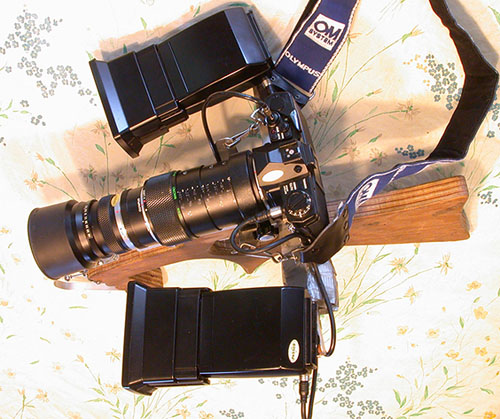

Figures
1 - 4
The first accessory I made for the E-330 camera is a cable release bracket that mounts to a tripod or the base on the heavy duty bellows rail of my macro stand. The E-330 is shown in this bracket in Figure 5. Figures 6&7 show the design details of the bracket. The camera is accurately aligned by two lugs bearing on the bottom of the front face of the camera and screw mating with the tripod mounting hole on the bottom of the camera. My first application of this bracket was to photograph nesting bluebirds with an old 500 mm telephoto lens mounted in the Olympus MF-1 lens adapter. This setup is shown in Figure 8. I used the unique critical focusing feature of the E-330 to obtain precise focus of the lens in manual mode. This camera has two sensors. The smaller sensor in the viewfinder can provide a live view as well as giving the stops of over or under exposure as the shutter speed is being selected. Live view with the main CMOS sensor and the mirror up allows a 480X660 group of sensor pixels to be displayed at full resolution on the large LCD display on the back of the camera for live camera focusing. This feature showed evidence of camera shake from holding a hand on the camera, which would occur without the Olympus remote infra-red trigger accessory or my new cable release bracket to actuate the shutter. Figure 9 shows the male bluebird next to the birdhouse recorded using the cable release. Precise focus had been previously set on the opening of the birdhouse. The image is recorded on a sensor measuring only 13X17 mm. So the lens resolution should be above 60 lines per mm to take full advantage of the 7.5 megapixels. The less than optimum resolution of the inexpensive telephoto lens was evident during live focusing on the round opening of the birdhouse. This was partially due to added spherical aberration from a subject distance of only 21 focal lengths from the lens. This lens has been reported in Modern Photography 1980s reviews to have a resolution of only 50-55 lines per mm measured from their standard target distance of 50 focal lengths.

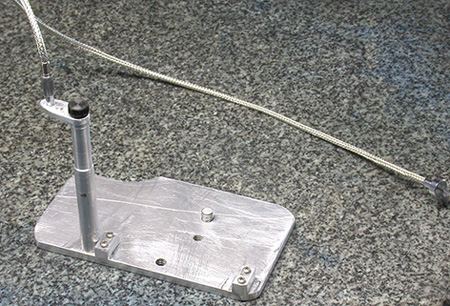
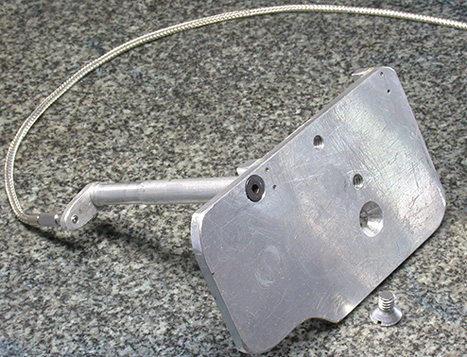

Figures 5 - 8
I next decided to make a gun-mount for the E-330 for both photomacrography as well as use with telephoto lenses. The camera with the new mount is shown in Figure 10. Figure 11 shows how the cable release goes through the wood stock and the aluminum bracket with lugs to lock the camera alignment when the thumb screw is tightened. My initial live butterfly photography with the 14-45 mm digital lens set at 45 mm was successful with the auto focus system. Figure 12 was taken at the closest working distance of about 1.2 feet. It is more difficult to get close to the larger butterflies such as the giant swallowtail shown in Figure 13. I tried using the Olympus 100 mm f/2 lens in the MF-1 adapter in the E-330 for increased working distance but was not able to reliably determine focus when looking though the viewfinder and the lens stopped down to f/11.

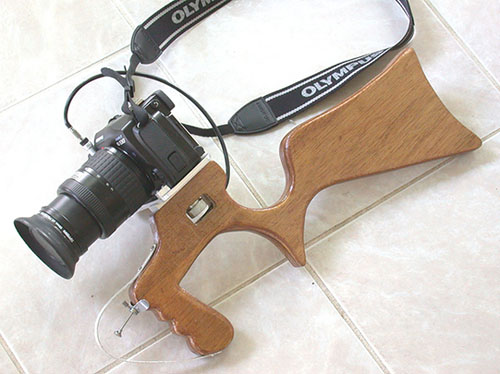
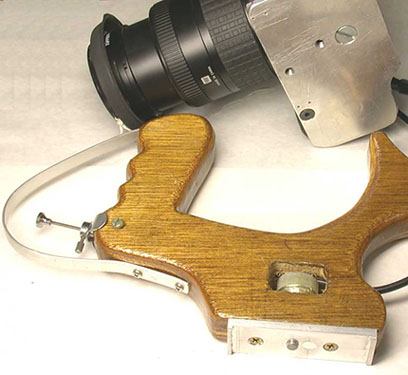
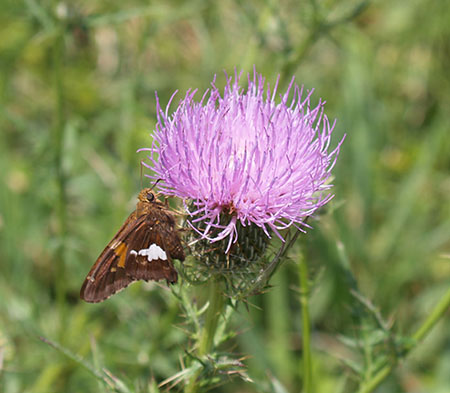
Figures 9 - 12

Figure 13
If I were more serious about optimum photomacrographs of live butterflies on flowers and not bothered by the costs of film and processing while living in retirement, I would use my existing OM-4 system. Digital photography will catch up to the capability of this film based system, but the E-330 and its 14-45 mm digital lens are probably the last major investment I can make in photography equipment.
Comments to the
author
Ted
Clarke
are welcomed.
Published in the September 2006 edition of Micscape.
Please report any Web problems or offer general comments to the Micscape Editor .
Micscape is the on-line monthly magazine of the Microscopy UK web site at Microscopy-UK
© Onview.net Ltd, Microscopy-UK, and all contributors 1995
onwards. All rights reserved.
Main site is
at www.microscopy-uk.org.uk
with full mirror
at www.microscopy-uk.net
.